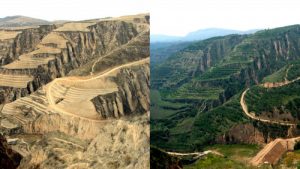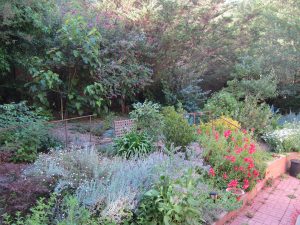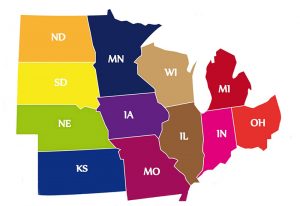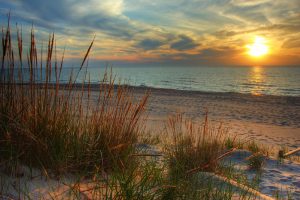I’ve been wanting to share some links and info. on a few very promising and impactful (but under-utilized) developments, trends, efforts, and solutions that I think more people should know about, spread the word about, and get involved in—namely: 1) land restoration, regeneration, and rewilding; 2) Community Solar; and 3) alternatives to plastics (and to animal leather and meat, etc.) I may develop more in-depth posts on a couple of these topics in the future.
I. Land restoration: remediation, regeneration, rewilding
Check out these sites for some great information on land (and habitat) restoration projects and programs:
 Ecosystem Restoration Camps: “A global movement of people that is creating an abundant earth. We repair broken ecosystems together and, in doing so, provide humanity with hope and a better future. Our big goal is to have one million people come together by 2030 and restore degraded ecosystems in 100 camps around the world.” Find out where their current camps are here (see map).
Ecosystem Restoration Camps: “A global movement of people that is creating an abundant earth. We repair broken ecosystems together and, in doing so, provide humanity with hope and a better future. Our big goal is to have one million people come together by 2030 and restore degraded ecosystems in 100 camps around the world.” Find out where their current camps are here (see map).
Regeneration International: Their mission is “to promote, facilitate and accelerate the global transition to regenerative food, farming and land management for the purpose of restoring climate stability, ending world hunger and rebuilding deteriorated social, ecological and economic systems.”
The Rewilding Institute (AKA Rewilding Earth): Their mission is “to develop and promote the ideas and strategies to advance continental-scale conservation in North America and beyond, particularly the need for large carnivores and a permeable landscape for their movement, and to offer a bold, scientifically-credible, practically achievable, and hopeful vision for the future of wild Nature and human civilization.”
Half-Earth Project: “With science at its core and our transcendent moral obligation to the rest of life at its heart, the Half-Earth Project is working to conserve half the land and sea to safeguard the bulk of biodiversity, including ourselves.”
And for a great story on a Brazilian couple who replanted and restored a 1,500-acre forest, see this article. They have been written up on many other sites, as well, including Smithsonian Magazine. Their organization is called Instituto Terra.
Also related to regenerative land use: I’ll be creating a post about permaculture at some point.
Related posts: Sustainable Land Use and Land Stewardship Posts; and Re-Tree the World; and Sustainable Agriculture, Farming, Gardening, and Food;and Animal Protection / Biodiversity Organizations and Resources
II. Community Solar
Community Solar is also sometimes known as Shared Solar or Solar Gardens.
“Community Solar refers to local solar facilities that are shared by multiple community subscribers who receive credit on their electricity bills for their share of the power produced. Community solar provides homeowners, renters, and businesses equal access to the economic and environmental benefits of solar energy generation regardless of the physical attributes or ownership of their home or business.” (Source: Solar Energy Industries Association: Community Solar—go to this link for more information on where it’s being implemented)
For more information on how community solar works and its benefits, see:
Solstice: Solar for Every American
Groundswell: Building community power
Grid Alternatives‘ Energy for All program
Department of Energy: Community Solar Basics
I also plan to write a post about renewable energy micro-grids, as well as solar-wind hybrid systems.
Related post: Municipalities, States, and Countries that are Achieving, Approaching, or Committed to 100% Renewable Energy (in particular, see the paragraph about Community Choice Energy, or Community Choice Aggregation local power programs)
III. Alternatives to petroleum-based plastics and other problematic materials
 Ecovative Design: This company is making mushroom (mycelium)- and hemp-based (“MycoComposite”) biodegradable/compostable foam-like packaging, mycelium-based leather-like textiles, skin care products, and now also meatless meat.
Ecovative Design: This company is making mushroom (mycelium)- and hemp-based (“MycoComposite”) biodegradable/compostable foam-like packaging, mycelium-based leather-like textiles, skin care products, and now also meatless meat.
Other entrepreneurs have made other types of bioplastics (including pleathers) from: banana peels or banana leaves; avocado pits/seeds and peels; agave fibers; hemp; and vegan “leather” from nopales cactus.
Hemp alone is extremely versatile. Its fiber, seeds, and oil can be used to make: fabric/textiles (e.g., clothing, rope); Hempcrete and other building materials; bioplastics; biofuel; foods and drinks (and animal feed); CBD products; paper products; and other products and materials. Hemp has many environmental benefits and advantages over other materials that it can replace. For more information, check out Vote Hemp, the Hemp Industries Association, or other groups.
Related posts: How to Identify Greener Products; and Health Impacts of Toxic Chemicals and Pollutants
I hope you’ll check out the links in this post, share them with others, and add any relevant recommendations or information in the Comments. Thanks!
October 30, 2021








 MICHIGAN
MICHIGAN The sustainability of one’s home depends as much (if not more) on its
The sustainability of one’s home depends as much (if not more) on its  …is located close to your (and your family’s) jobs and schools; close to shops, parks, civic buildings, and other services and amenities your family regularly uses; and close to public transit stops—ideally within
…is located close to your (and your family’s) jobs and schools; close to shops, parks, civic buildings, and other services and amenities your family regularly uses; and close to public transit stops—ideally within